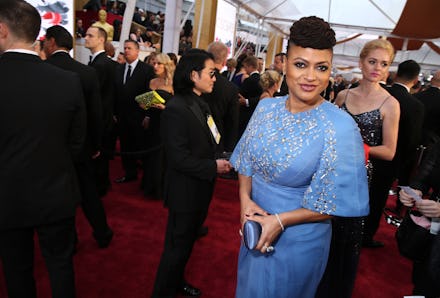These 4 Charts Reveal Exactly How Terrible Hollywood's Diversity Problem Is

Hollywood isn't diverse. It's an argument made so many times over that it's begun to feel more like fact than observation. Representation in movies is restricted mostly to straight, white men. But surely, that's been an exaggeration. It can't be that bad, can it?
It can, and it is.
A new study by the University of Southern California's Media, Diversity and Social Change Initiative crunches the representation numbers over seven of the past eight years of film. From 2007 to 2014 (with 2011 excluded), participants extensively studied the top 100 films at the U.S. box office. The study examines 30,835 characters with speaking roles in 700 films. The findings: Women, people of color and queer characters are vastly underrepresented in Hollywood.
Only 30.2% of all 30,000-plus characters examined for the study were female. Theoretically, the roles should be at parity — so about 50-50, reflective of the world's sex ratio. To say that this is a disappointing result is an understatement. It's not even close to the goal.
The picture gets even worse when constrained to how many of the top 100 films in 2014 featured a female lead or co-lead: only 21.
Behind the camera, women are even more poorly represented, and it's not just big-budget superhero movies that are failing to hire them. Out of all directors working on the top 100 films in 2014, only two were female: Ava DuVernay (Selma) and Angelina Jolie (Unbroken). The writing and producing fields yielded slightly better results, but not by much: Only 11.2% of the writers and 18.9% of the producers on these projects were women.
The racial and ethnic breakdown of characters in the most popular films is similarly disappointing. In 2014, 26.9% of speaking characters were not white. Worse, the study notes, that figure is virtually unchanged from 2007. In eight years, diversity in Hollywood's most popular movies has stayed stagnant.
These stats make it clear: Diversity in Hollywood is still in a dismal picture. But why is representation so important? Including a diverse palette of characters in movies helps to better represent the nation the film industry is trying to serve.
"Our nation is diverse," Katherine Pieper, one of the study's authors, told Mic. "For us, it's really about looking to see if every voice and every person has a reflection in the most popular films."
More than that, however, it's often better business to be as diverse as possible. "If 50% of the people going to the box office are women, and over 40% are from underrepresented racial or ethnic groups, it's a real question of leaving money on the table," study director Stacy L. Smith told Mic.
The TV industry is already learning how profitable diversity can be. Empire, Fox's show about the hip-hop music industry, features a predominantly black cast and was successful in every definable metric in its first season. It wasn't just a hit, it was the defining hit of the last year in TV. Other shows like Black-ish, How to Get Away with Murder, Scandal and Jane the Virgin have also enjoyed major critical and commercial success by featuring non-white or non-male leads.
TV also continues to rule when it comes to LGBTQ characters. 2014 alone featured groundbreaking shows like Transparent, Orange Is the New Black and Looking. What did the same year in movies bring?
The bad news: There were only 19 LGB characters out of a total 4,610 speaking characters in the top 100 films of 2014. The worse news: There was not one trans character. The worst news: 86 of the films featured not one LGBT character. This was not 2004, or 2007. In 2014, just last year, only 14 of the top 100 movies featured any queer characters at all.
Despite the grim outlook, Smith and her team remain "guardedly optimistic" about the future, as Pieper put it. As they noted when talking with Mic, this year has already been a successful one for movies about women in particular. 2015, they hope, will be the beginning of a trend of progress in the most popular films of the year.
There will have to be even more of a push for representation, though many solutions are quite simple. For example, a 50-50 split of female characters to male characters could be achieved within less than five years. "We ran the numbers, and if you added five female characters to the top 100 films every year, reset the norm, and did it again four years in a row, we would be at parity onscreen," Smith said. "That's a really simple, straightforward solution."
Bottom line: A more diverse film industry is absolutely an attainable goal. Hollywood just has to be willing to try. As Smith put it, "The only thing that's limited here is the imagination of the content creator."